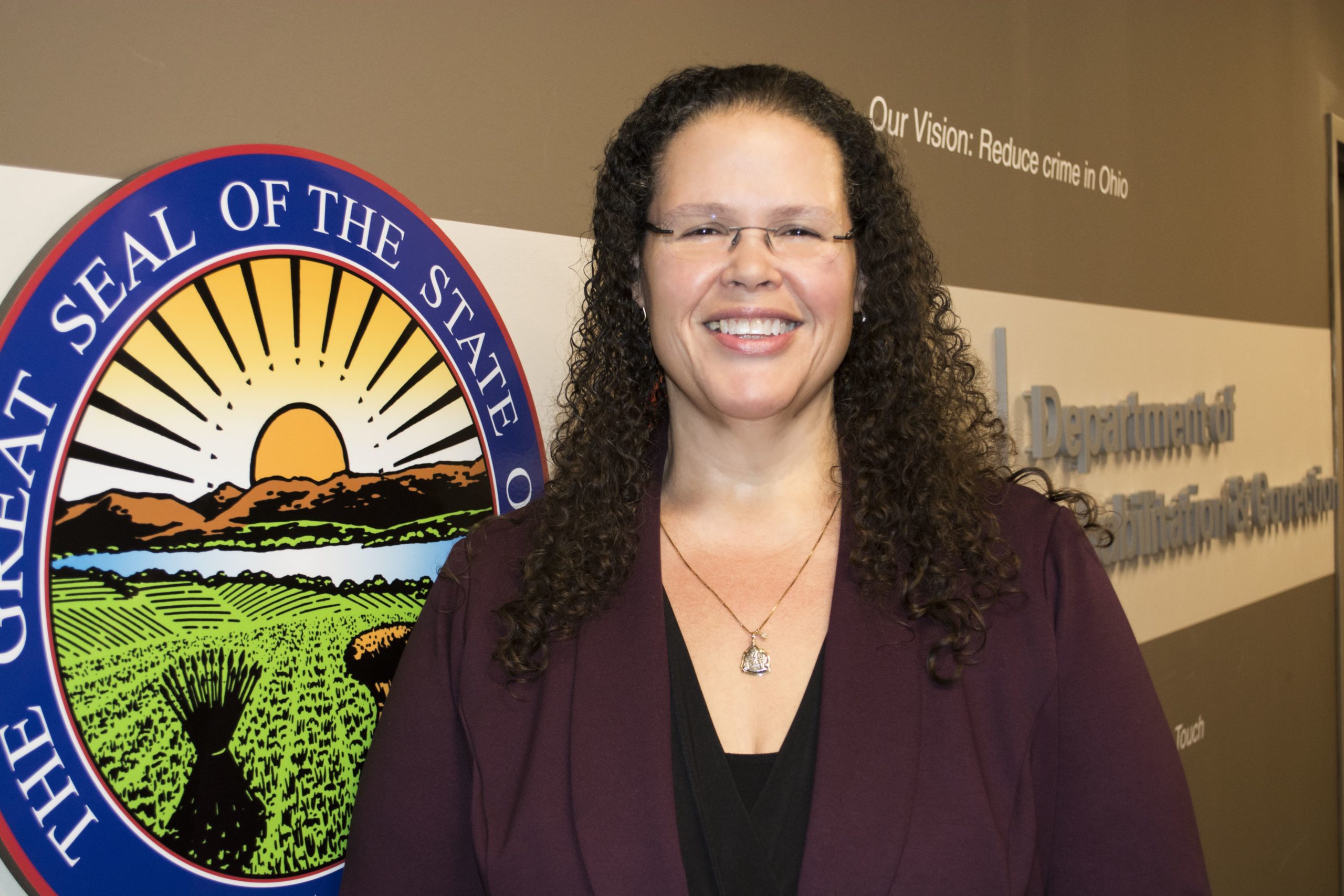BJA 2023 Spotlight, Ohio

Annette Chambers-Smith was appointed Director of the Ohio Department of Rehabilitation and Corrections (ODRC) in January 2019. She has a degree in organizational management and brings thirty years of corrections experience. She has received many awards and recognition during her career, including the Ohio Community Corrections Association 2022 President’s Award, the 2021 NABCJ Leadership Award from the Ohio chapter, the NABCJ 2020 Jonathan Jasper Wright Award for leadership at the regional and state level for criminal justice, the Department of Rehabilitation and Correction’s Gold Star Award in 1997, 1998, and 2002, Director Mohr’s Impact Award in 2011 and twice in 2014, and a mark of distinction from the American Correctional Association when she was named the Best in the Business. In addition, she is the co-chair of the Governor’s task force on Post Release Control, the Vice-Chairwoman of the Recovery Ohio Advisory Council, a lifetime member of the National Association of Blacks in Criminal Justice (NABCJ), and a member of Governor DeWine’s Ohio Human Trafficking Task Force. In 2023, she was appointed to the National Institute of Corrections Advisory Board by United States Attorney General Merrick Garland.
Today’s challenges in corrections often revolve around retention and recruitment. The challenge facing ODRC was an organizational culture that considered recruitment and retention solely a Human Resources function. Director Chambers-Smith realized she needed everyone to focus on these initiatives for each person to be engaged and help build an ocean from many drops. One of the four core values Chambers-Smith promotes is “Take care of our staff; they will transform our offenders,” which is transforming how ODRC conducts business. An employee support team was created to focus on staff needs, including health and wellness, trauma and resiliency training, and veterans services. External subject matter experts were brought in to assess everything and reveal any blind spots.
The hiring process took three to four months, which was identified as a barrier to getting good employees. Chambers-Smith helped change policy, procedure, and bureaucracy to move things along with hiring. New employee training was changed, bringing in leadership to address every class and learn what drives young people to be engaged in their jobs with a sense of purpose and belonging. ODRC changed job classifications to the lowest level of licensure needed to complete the job duties to fill vacancies for clinicians and teachers. Supplements and incentives were strategically implemented considering geography and position. On-the-job training started prior to attending new employee training, and where best practices are communicated. These initiatives are tracked with turnover and vacancy rates, continuous monitoring of the data, and making course corrections as needed.
The challenge to these changes was getting everyone to embrace this holistic strategic plan and get on board. ODRC had to convince state departments the plan was necessary. And social media needed to be adopted, which meant getting the technological systems modernized to best use the various platforms.
The changes are seen in everyone working together, caring about one another, and demonstrating a spirit of cooperation. Staff are opening up and speaking about their experiences, while the administration is acknowledging issues and concerns so they can be addressed.
